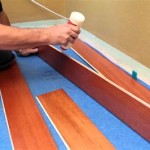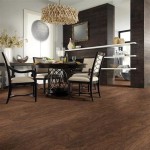Floor Tiles vs. Granite: A Comprehensive Comparison for Flooring Choices
Choosing the right flooring material is a critical decision for any construction or renovation project. Flooring impacts not only the aesthetics of a space but also its functionality, durability, and overall value. Two popular options frequently considered are floor tiles and granite. While both offer distinct advantages and are suitable for a variety of applications, understanding their differences is essential to making an informed choice. This article provides a detailed comparison of floor tiles and granite, exploring their key attributes, pros and cons, and suitability for different environments.
Floor tiles encompass a broad category of manufactured hard flooring materials, typically made from clay, porcelain, ceramic, or stone composites. They are available in a vast array of sizes, shapes, colors, and patterns, offering significant design flexibility. Granite, on the other hand, is a natural igneous rock formed from the slow cooling of magma beneath the earth's surface. Its inherent durability and unique granular appearance have made it a sought-after material for countertops, flooring, and other architectural applications.
Aesthetic Appeal and Design Options
The aesthetic appeal of flooring is a crucial consideration for many homeowners and designers. Floor tiles offer an unparalleled range of design possibilities. Manufacturing processes allow for the creation of tiles that mimic the look of natural stone, wood, or even concrete, without the associated cost or maintenance challenges. Digital printing technology enables intricate patterns and realistic textures, opening up a world of creative possibilities. The consistent nature of manufactured tiles also ensures uniformity in color and pattern, which can be desirable for certain designs. Furthermore, tiles can be easily cut and shaped to fit intricate spaces or create custom layouts.
Granite's aesthetic lies in its natural beauty and inherent variations. Each slab of granite is unique, exhibiting a distinctive pattern of mineral inclusions and veining. This natural variance adds a touch of character and sophistication to any space. The color palette of granite ranges from light grays and whites to deep blacks, browns, reds, and greens, offering a spectrum of options to complement various design styles. However, the availability of specific colors and patterns can be limited by the natural supply, and matching granite slabs for large areas can sometimes present a challenge. While granite can be cut and shaped, complex designs and intricate patterns are more difficult to achieve compared to tile.
Durability and Maintenance Requirements
Durability is a critical factor when selecting flooring, especially in high-traffic areas. Granite is renowned for its exceptional durability and resistance to scratches, chips, and stains. Its dense composition makes it highly resistant to water absorption, making it suitable for kitchens and bathrooms. Granite can withstand heavy foot traffic and is less likely to show wear and tear over time. However, granite is a porous material and requires periodic sealing to prevent staining from spills and liquids. Regular cleaning with a pH-neutral cleaner is recommended to maintain its appearance. While highly durable, granite can chip or crack if subjected to a significant impact.
Floor tiles also offer excellent durability, although the specific level of resistance varies depending on the type of tile. Porcelain tiles, in particular, are known for their high density and low porosity, making them highly resistant to water absorption and staining. Ceramic tiles are less dense than porcelain and may require more frequent sealing. The grout lines between tiles are susceptible to staining and require regular cleaning and sealing to maintain their appearance. Some tiles, especially those with textured surfaces, may require more effort to clean. However, tiles are generally easy to maintain with regular sweeping and mopping. The hardness and scratch resistance of tiles also vary depending on the material and manufacturing process, so it is important to choose tiles with an appropriate abrasion resistance rating for the intended application.
Cost and Installation Considerations
The cost of flooring materials is a significant factor in any construction or renovation project. The cost of floor tiles varies widely depending on the material, size, design, and brand. Ceramic tiles are generally the most affordable option, while porcelain and specialty tiles can be more expensive. The cost of installation also varies depending on the complexity of the project and the labor rates in the area. Tile installation typically requires specialized tools and expertise, and improper installation can lead to problems such as cracked tiles and uneven surfaces.
Granite is generally more expensive than most types of floor tiles. The cost of granite depends on the quality, rarity, and origin of the stone. Installation costs are also typically higher for granite due to its weight and the need for specialized equipment and expertise. Granite slabs require precise cutting and fitting, and skilled installers are essential to ensure a seamless and aesthetically pleasing result. In addition, the subfloor must be properly prepared to support the weight of granite, which can add to the overall cost. While granite represents a higher upfront investment, its inherent durability and longevity can provide long-term value.
Environmental Impact and Sustainability
The environmental impact of flooring materials is an increasingly important consideration. Floor tiles can be manufactured using recycled materials, such as glass and porcelain, reducing the demand for virgin resources. Some tile manufacturers also employ sustainable manufacturing practices, such as reducing water consumption and minimizing waste. However, the production of tiles can be energy-intensive, and the transportation of materials can contribute to carbon emissions. The disposal of tiles can also be problematic, as they are often difficult to recycle.
Granite is a natural material extracted from the earth, and its extraction can have environmental impacts, such as habitat disruption and soil erosion. Quarrying operations can also generate dust and noise pollution. However, granite is a highly durable and long-lasting material, which can reduce the need for replacement and minimize waste over the long term. Granite is also a natural and inert material, and it does not emit harmful chemicals into the environment. The transportation of granite can contribute to carbon emissions, depending on the distance from the quarry to the installation site.
Suitability for Different Applications
The suitability of floor tiles and granite for different applications depends on a variety of factors, including the intended use of the space, the expected level of traffic, and the desired aesthetic. Floor tiles are a versatile option that can be used in a wide range of applications, including kitchens, bathrooms, living rooms, and hallways. Their resistance to water and staining makes them particularly well-suited for wet areas. Tiles are also a popular choice for commercial spaces, such as offices, retail stores, and restaurants, due to their durability and ease of maintenance.
Granite is a durable and elegant choice for high-end residential and commercial applications. It is often used in kitchens and bathrooms, where its resistance to water and stains is highly valued. Granite is also a popular choice for entryways, hallways, and living rooms, where its natural beauty and durability can create a lasting impression. However, granite may not be the best choice for all applications. Its hardness can make it uncomfortable underfoot for extended periods, and its smooth surface can be slippery when wet. Granite is also not recommended for outdoor applications in climates with extreme temperature fluctuations, as it can be susceptible to cracking.
Maintenance Specifics
Floor tile maintenance hinges on the type of tile. Ceramic tiles, being more porous, benefit from regular sealing to prevent staining, especially in high-moisture areas like bathrooms. Grout lines are notorious for accumulating dirt and mold; therefore, routine cleaning with a grout brush and a specialized grout cleaner is crucial. Porcelain tiles, due to their density, are more resistant to stains but still require regular sweeping and mopping with a neutral pH cleaner. Avoid abrasive cleaners, as they can scratch the surface and dull the finish. For both ceramic and porcelain tiles, addressing spills promptly is essential to prevent staining. In high-traffic areas, consider using mats or rugs to protect the tile surface from excessive wear.
Granite maintenance focuses on preventing stains and maintaining the stone's natural luster. Regular sealing, typically every one to two years, is crucial to prevent liquids from penetrating the porous surface. Clean spills immediately with a soft cloth and a pH-neutral cleaner specifically designed for granite. Avoid using acidic or alkaline cleaners, as they can etch the surface and damage the finish. Never use abrasive cleaners or scouring pads, as they can scratch the granite. Occasional polishing with a granite polishing compound can help restore the stone's shine. Placing mats at entryways can help prevent dirt and debris from scratching the granite surface. It is important to remember that granite is a natural stone, and small variations in color and pattern are inherent characteristics that add to its unique appeal.
Long-Term Value and Return on Investment
The long-term value and return on investment (ROI) for floor tiles and granite are influenced by several factors, including the initial cost, installation expenses, durability, maintenance requirements, and aesthetic appeal. While floor tiles generally have a lower initial cost, their lifespan can vary depending on the quality of the tile and the level of traffic. High-quality porcelain tiles, when properly installed and maintained, can last for several decades. The ability to easily replace individual tiles can also extend the lifespan of a tiled floor. The aesthetic appeal of tiles can also impact the ROI. Timeless designs and high-quality materials can enhance the value of a property.
Granite, despite its higher initial cost, offers excellent long-term value due to its exceptional durability and timeless aesthetic. A properly installed and maintained granite floor can last for generations, making it a worthwhile investment for homeowners seeking a lasting and luxurious finish. The unique and natural beauty of granite can also enhance the resale value of a property. However, it is important to consider the overall design style of the property when choosing granite. Granite may not be the best choice for all architectural styles, and its aesthetic appeal can be subjective.
Key Distinctions Summarized
Granite is a naturally occurring stone prized for its durability and unique veining, while floor tiles represent a diverse category of manufactured materials offering a broader range of design options. Granite requires sealing to prevent staining, whereas tile’s maintenance focuses more significantly on grout lines. The higher upfront cost of granite is often offset by its long lifespan and potential contribution to property value, whereas floor tiles present a more budget-friendly initial investment. The aesthetic of granite leans towards natural variation and sophistication, whereas floor tiles provide precise patterns and consistent colors.
Vitrified Tiles Or Granite Which Is A Better Option For Your Home

Granite Vs Porcelain Tiles Which Is The Best Flooring Option

Which Is Better Granite Or Marble Flooring Skytouch
.webp?strip=all)
Which Is Better Granite Or Marble Flooring Skytouch

Granite Vs Porcelain Tiles Which Is The Best Flooring Option

Durable Granite Tile Flooring High Style That Turns Heads

Which Is Better Granite Or Marble Flooring Skytouch

Which Is Better For Flooring Marble Granite Or Tile Thediyplan
Granite Flooring Types Colors Best

Which Is Better Granite Or Marble Flooring Skytouch
Related Posts








